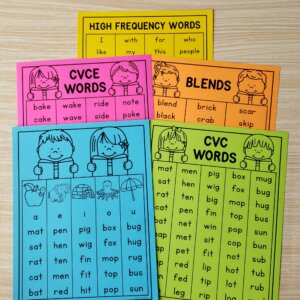
PA Phonological Awareness
Segment to Blend
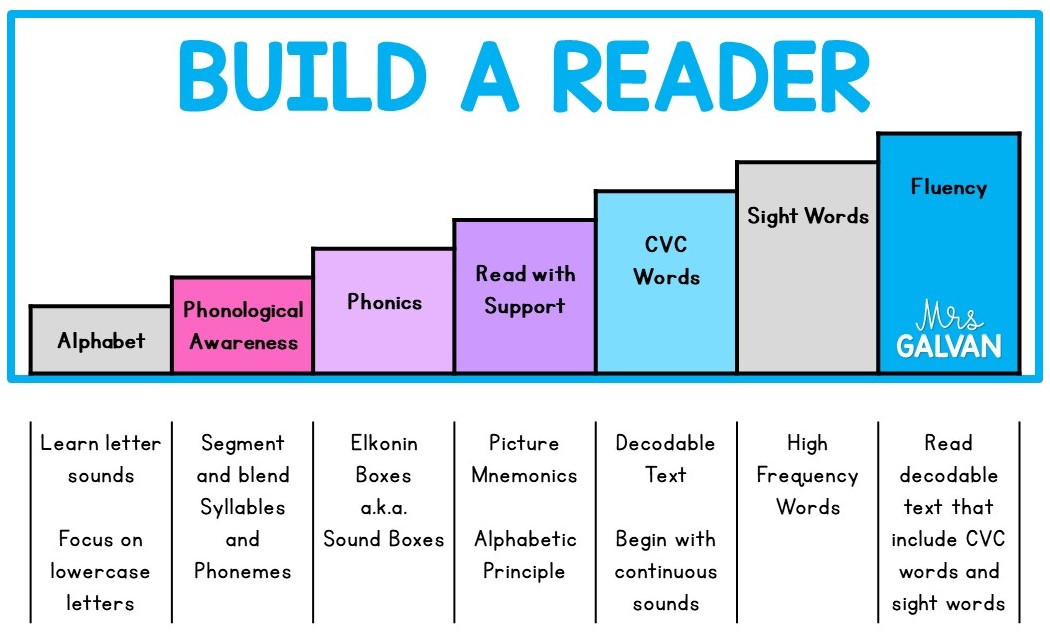
Let’s begin with the end in mind. Our goal is to build a reader quickly and efficiently!
STEP 1 ALPHABET Learn letter sounds
STEP 2 PA Segment to blend! (You are here!)
STEP 3 PHONICS with Sound Boxes
STEP 6 Learn SIGHT WORDS
There are many components of reading. The main five are Phonological Awareness, Phonics, Fluency, Vocabulary, and Comprehension. For the purposes of this blog post, we will be focusing on Phonological Awareness.
STEP 2 PA Segment to Blend!
Blending is an essential skill for decoding. However, I have learned from personal experience and from research by Torgesen, Morgan, & Davis (1992) that emphasis should be placed on segmenting words into phonemes.
There are many parts of Phonological Awareness, but with the goal of reading, we are going to focus on phonemic awareness. A phoneme is simply the smallest unit of sound. I always think of the word PHONE inside the word phoneme. You can hear SOUND through a phone, so that helps me associate the word phoneme with sound.
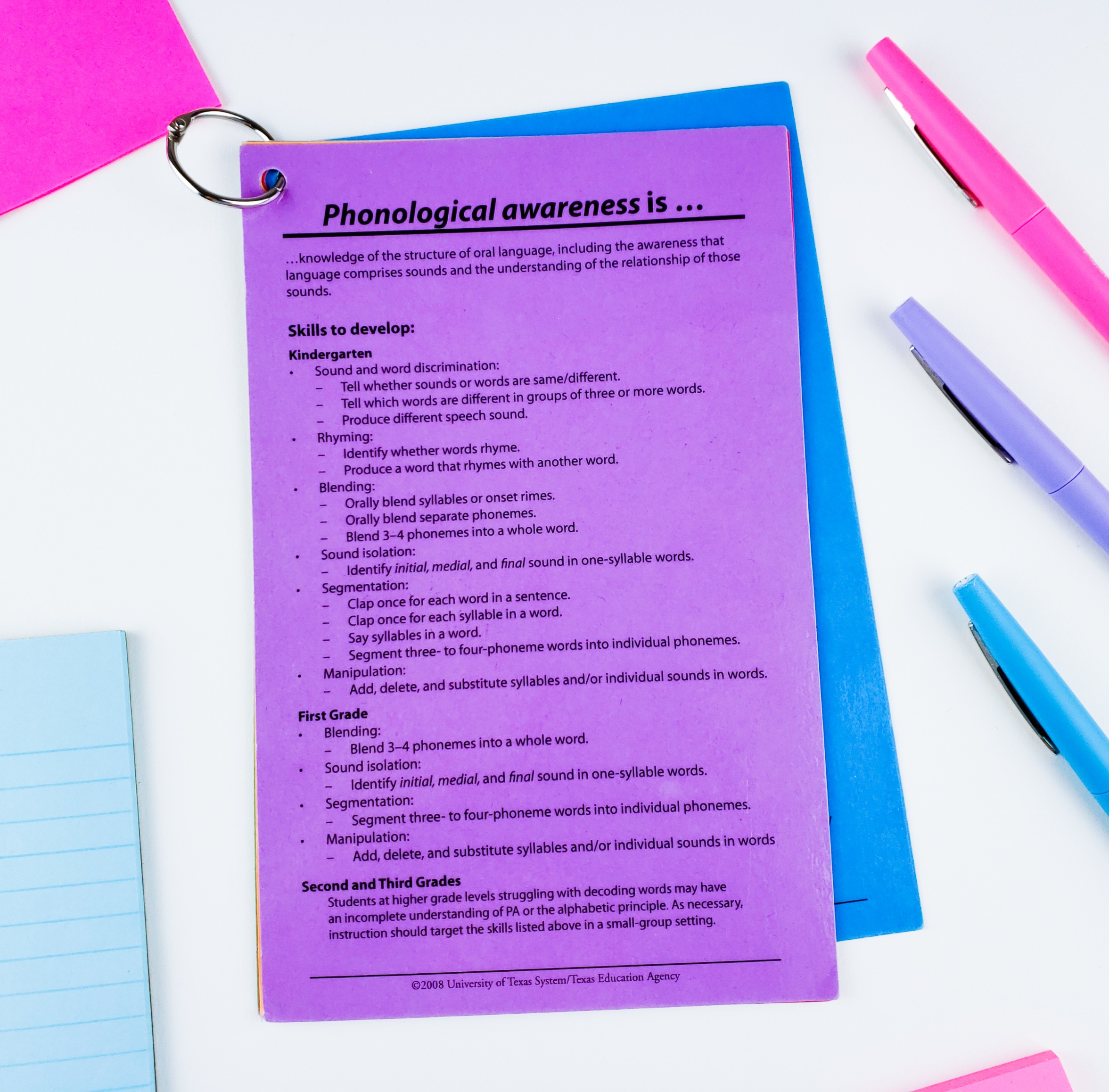
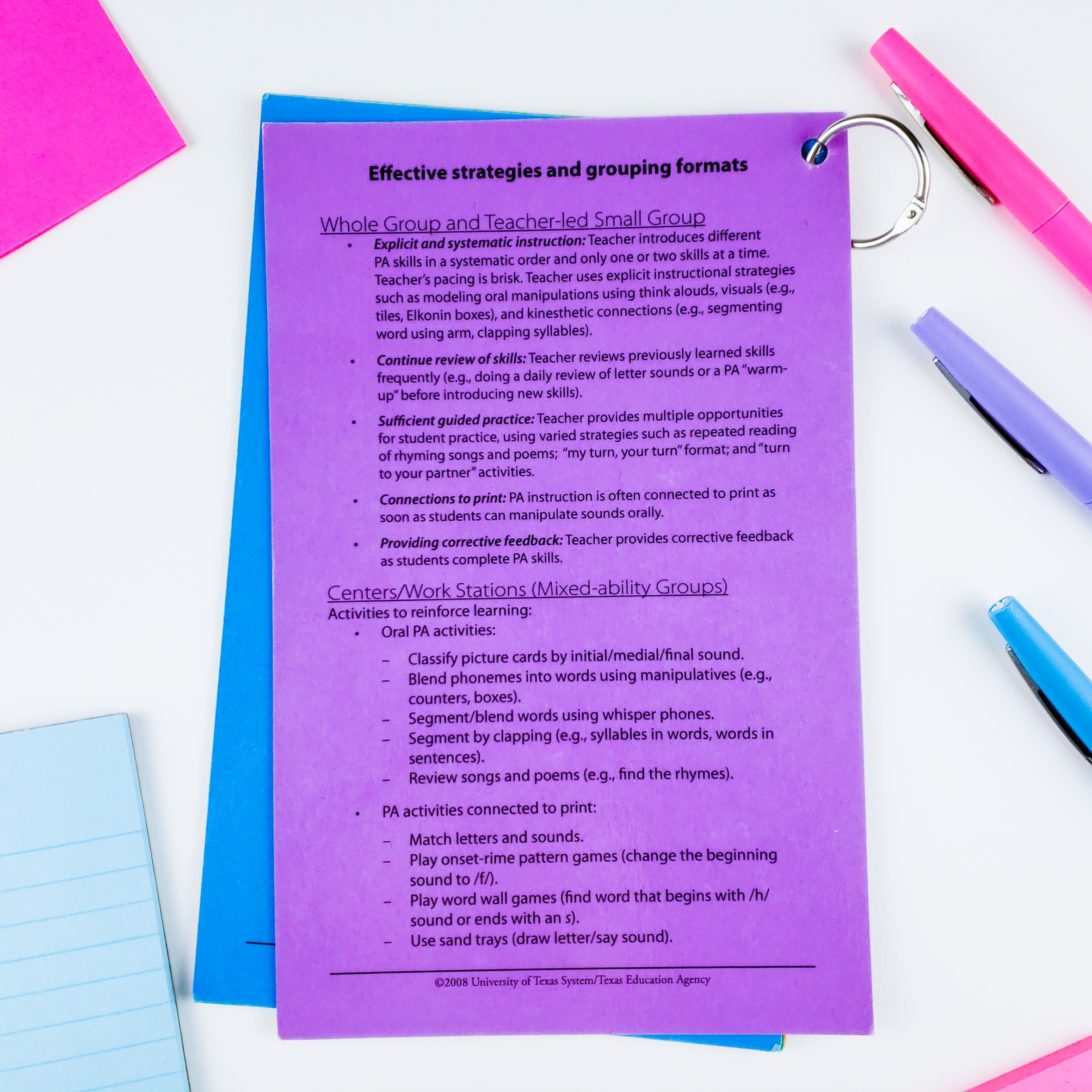
“A Focus on Phonemic Awareness” (<- Click to download) is a TPRI (Texas Primary Reading Inventory) Newsletter that reviews scientifically research based best practices for teaching Phonemic Awareness.
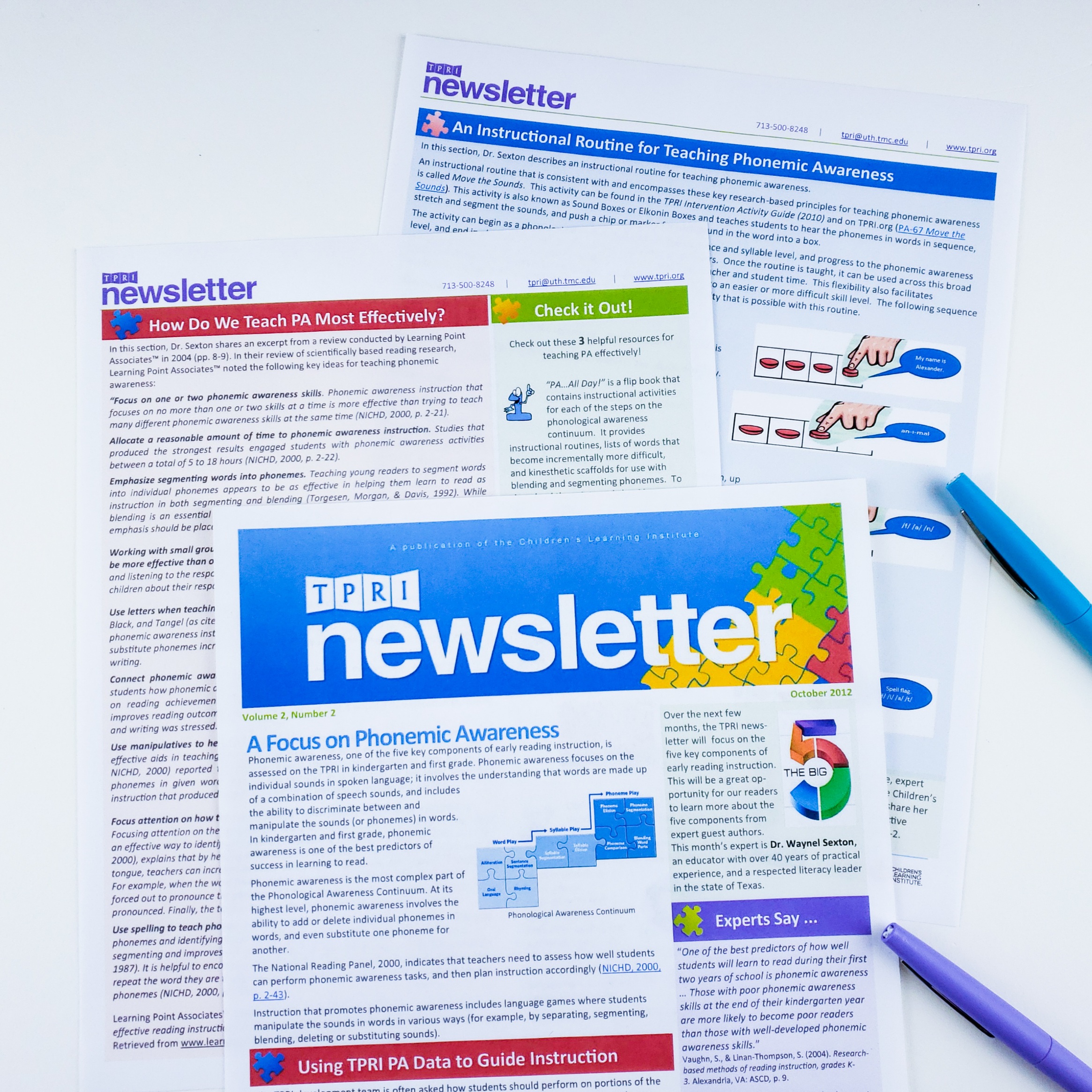
My favorite research based instructional routine for teaching phonemic awareness is called Move the Sounds. This activity can also be found in the Texas Primary Reading Inventory (TPRI) Intervention Activity Guide and on TPRI.org (PA-67 Move the Sounds ). This activity is also known as Sound Boxes or Elkonin Boxes. Move the Sounds teaches students to segment words into individual phonemes.
See me demo it in the video below.
I believe the Move the Sounds activity is best described on page three of the TPRI Newsletter called “A Focus on Phonemic Awareness“. (pictured above) The activity basically involves using a row of four connected boxes and placing some counters above them. You can use water bottle caps or even square math manipulatives. We will begin segmenting words into phonemes. I’ve often told students that we’re going to “CUT” the word. I understand that it is not the correct term for what we are doing, but I believe most children and many adults would look at me in confusion if I told them we were going to segment a word in to phonemes.
Level 1 of segmenting words is the easiest because it begins with words that only have two sounds. Words like see, me, we, bee, my, by, go, and no.
Begin by modeling the activity for students. Say the word. (SEE) Repeat the word slowly. Say /s/ and move the first counter down into the first box. Say /ē/ and move the second counter down into the second box. Now move your finger across the counters from left to right and say, “SEE”! That last part is very important, because it is where we show that the segmented sounds make up the word see. We are blending.
Now that the students have seen how to do it. Give them a chance to do it with the same word. Continue with more words that have two sounds. Once children are able to segment words with two sounds consistently, they are ready to move on to level 2.
Level 2 of segmenting words follows the same routine, but with words that have three sounds. Use words such as mat, map, man, make, safe, face, bake, shake, feet, and seek. Once students are able to segment words with three sounds they have developed the phonemic awareness skills that they will need to read cvc words.
The quick video below demonstrates segmenting a word with two phonemes and a word with three phonemes. am = /a/ /m/ man = /m/ /a/ /n/
Level 3 of segmenting words follows the same routine, but with words that have blends. Use words such as free, flag, sleep, flip, flat, slime, flake, crab, snake, drum, and crash.
I created this Sound Boxes FREEBIE that you can use to practice these activities. There are several different options to choose from.
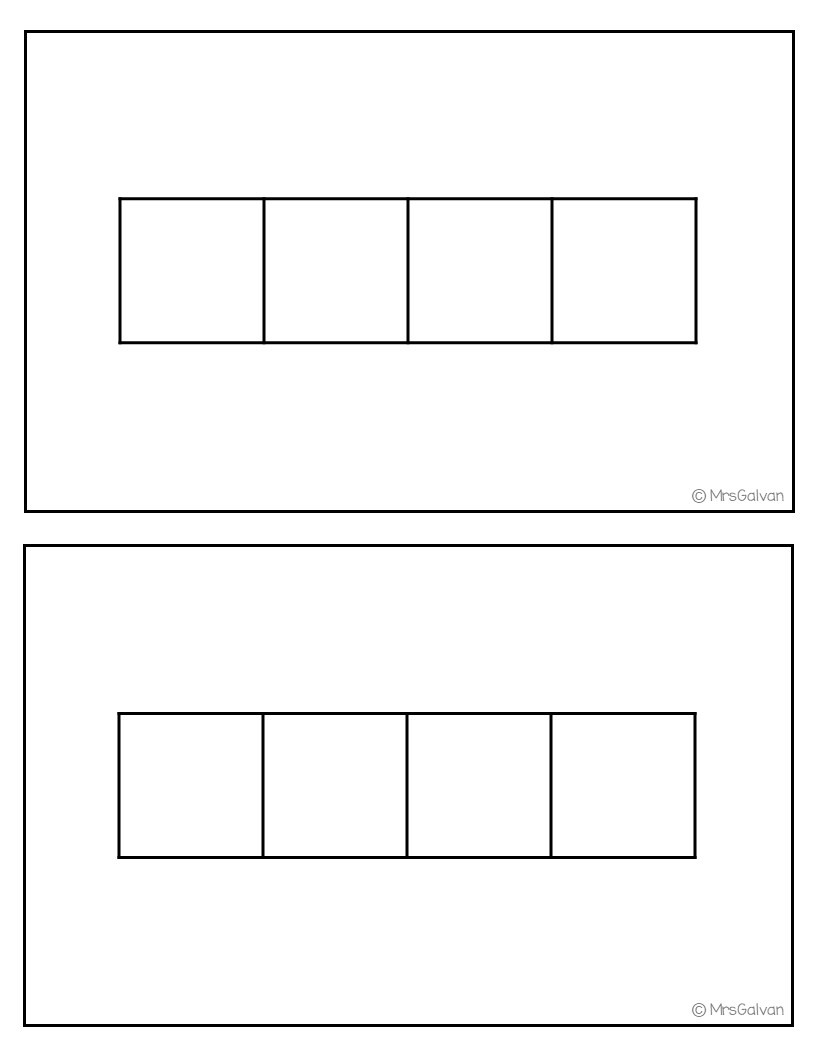
If you download the FREE TPRI Newletter linked above you will find that it also includes a link to download this FREE Resource called PA All Day that was developed by The Children’s Learning Institute at the University of Texas at Houston. It is available in English and Spanish.
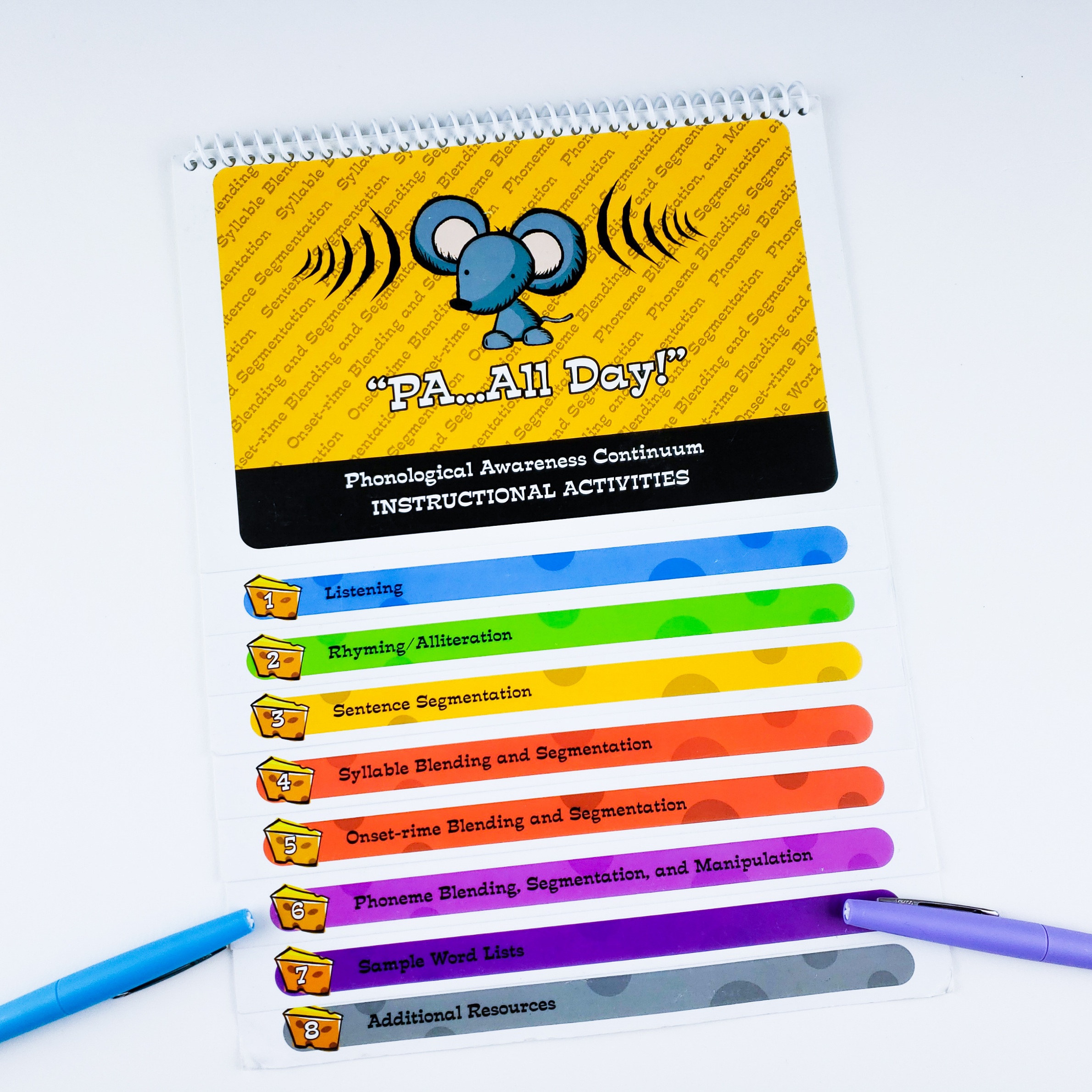
Remember to focus on Phoneme Segmenting and Blending to help developing readers build the skills they need to become successful readers.
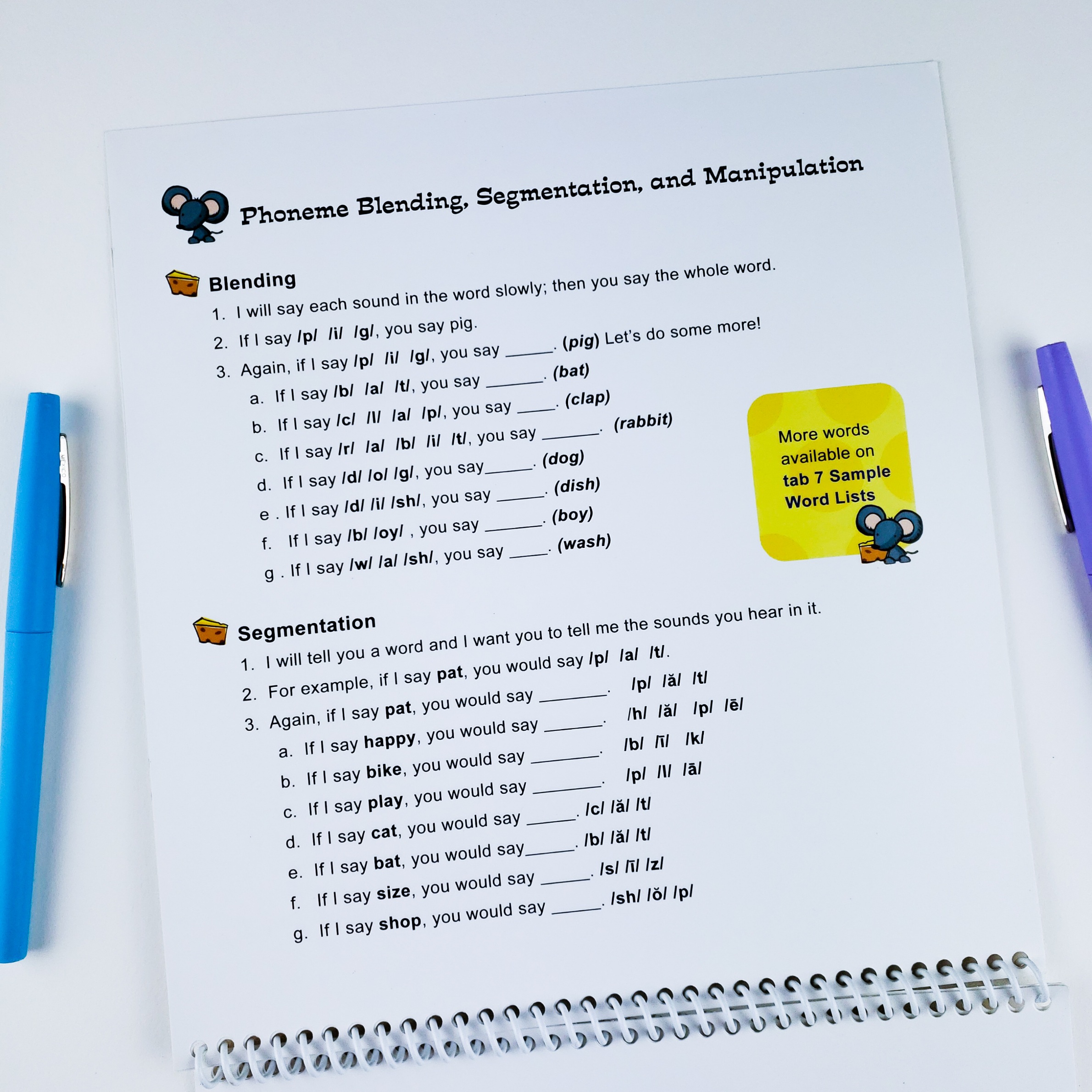
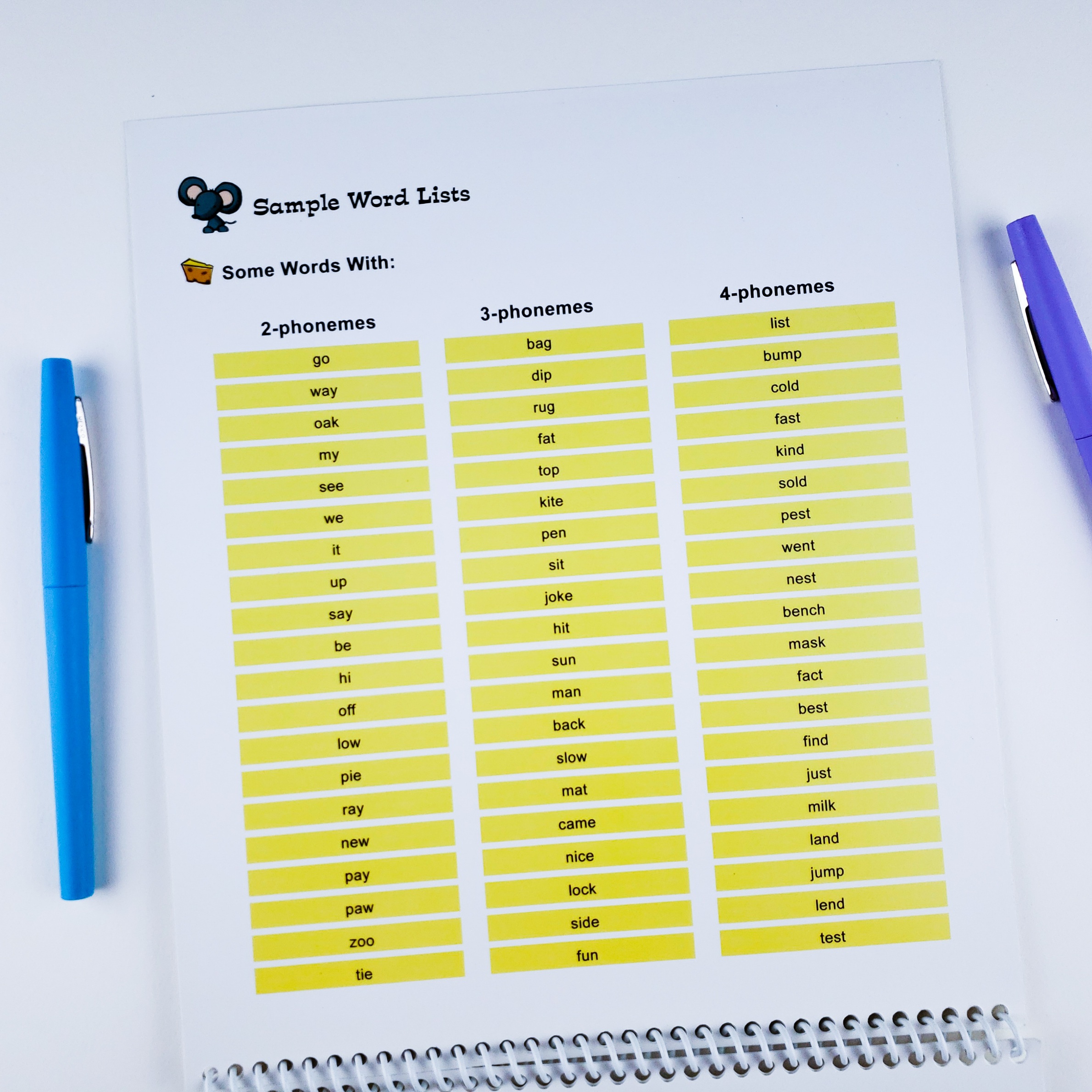
I hope this information and resources on Phonemic Awareness was helpful. We will continue to build on this activity in the next step.
Our goal is to build a reader quickly and efficiently!
Click below to learn more about each step.
STEP 1 ALPHABET Learn letter sounds
STEP 2 PA Segment to blend! (You are here!)
STEP 3 PHONICS with Sound Boxes
STEP 6 Learn SIGHT WORDS
Goal : Read sentences with cvc words and sight words.
Let’s build more little readers! Pin to remember or share on Facebook!
-MrsGalvan
Save to remember!
Share to help a teacher!
Want the inside scoop and some FREEBIES?
